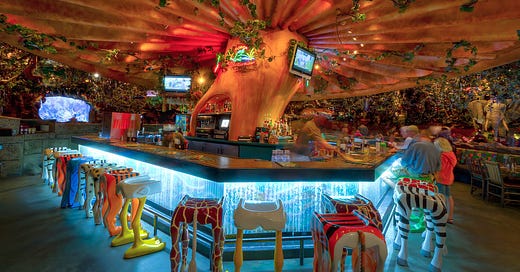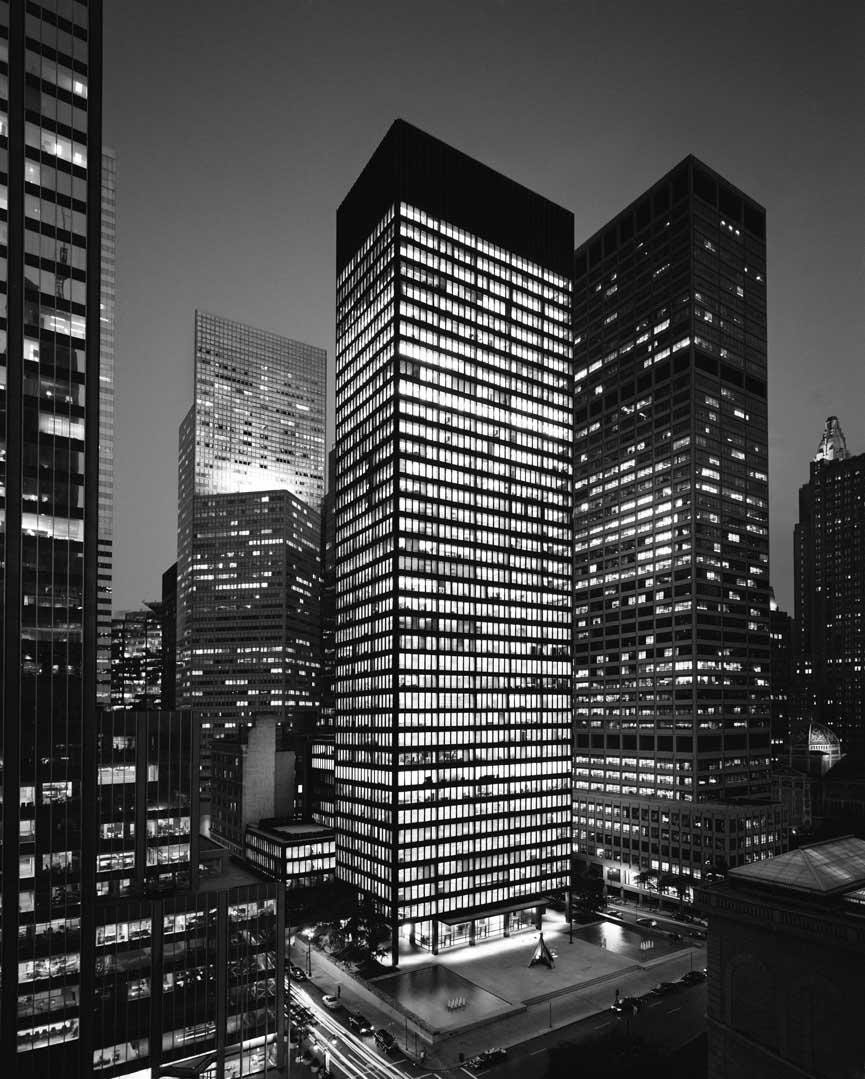Rainforest Cafe is well past its prime as a restaurant chain, but as you might imagine, it’s been perfectly positioned for a younger generation of content creators to “rediscover” it, as this Slate piece describes. I never knew that the Rainforest Cafe’s founder, Steven Schussler, pitched the original concept to investors by using his life savings to build a prototype of the theme restaurant in his own house in the Minneapolis suburbs—using 3,700 extension cords—before eventually landing a deal and opening the first location in the Mall of America in 1994.
This line also stuck with me:
“With only 16 locations remaining in North America, the Rainforest Cafe is becoming as endangered as the actual rainforest.”
The article’s account of the Rainforest Cafe’s online revival doesn’t just attribute it to the obvious explanation, ‘90s/’00s nostalgia, but to the enduring appeal of tactile, experiential maximalism and its renewal as a rich source of digital content—the Rainforest Cafe was TikTok bait avant la lettre:
“Rainforest Cafe’s virality is an outgrowth of its design. A rare holdover from the Clinton administration that predated the react-video industrial complex and yet was built entirely for it.”
The chain’s second life is not surprising in the sense that social media continuously deploys its vast army of creators to scour the landscape for cultural artifacts that would play well online. As the piece implies, the Rainforest Cafe is especially interesting because, in retrospect, it seems tailor-made for the future, unlike theme restaurants from the same era that may have nostalgia value but otherwise didn’t stand the test of time. Hard Rock Cafe and Planet Hollywood, for instance, derived their appeal from the remaining boundaries between consumers and celebrities, which have since collapsed:
“Thirty years later, with direct access to your favorite celebrity’s inner monologue just a click away, not many are pining to eat a bowl of spaghetti a booth away from Slash’s top hat, let alone embarking on a cross-country road trip to the last few remaining Hard Rock Cafes.”
Rainforest Cafe may have presented a particularly content-rich environment but in the ‘90s most of that content was left on the table, so to speak. When you visited back then, you couldn’t really broadcast your experience beyond the restaurant’s walls; you were stuck sharing it with just the people you came with. By today’s standards, that seems like a charmingly modest value proposition—you did all this just for us? Or, more cynically, the restaurant was overdesigned and overbuilt for the purpose it served, a sign of a bloated market due for a correction. But there’s something utopian about the last era when decorative excess was mostly meant to be consumed firsthand.
THE END OF NATURE
Comparing the Rainforest Cafe’s decline to the loss of the actual rainforest is barely even a joke. In 1989, Fredric Jameson described postmodernism as what results “when the modernization process is complete and nature is gone for good.” Such an entirely modernized world—the one in which we currently live—“is a more fully human world than the older one, but one in which ‘culture’ has become a veritable ‘second nature’” (the corollary of this is that nature as we know it has become an extension of human culture).
The Rainforest Cafe may be the most literal example of this transition—probably too on the nose, in fact—but the chain’s narrative arc demonstrates how we experience the loss of this cultural second nature like a kind of deforestation or soil erosion, a change in the landscape driven by forces beyond our control, human and otherwise. For the nostalgic millennial, encountering one of the 16 Rainforest Cafes that still exists in Atlantic City or Niagara Falls or Grapevine, Texas might produce the same frisson as spotting a rhino on a safari. And to further extend the metaphor, the current digital ecosystem reframes these cultural objects as natural resources waiting to be recognized, harvested, and refined into monetizable content—a layer of human artifice that is less artificial only because it’s been around longer.
Of course, Jameson did not mean that nature had vanished altogether from the modernized world—there is obviously plenty of it still around—but that human civilization had effectively subsumed nature, and that we no longer understand it as a set of forces operating outside the scope of human civilization. We have largely tamed it. “In a postmodern world all phenomena and forces are artificial,” as Hardt and Negri put it.
If this sounds like an overstatement, consider the positive connotations of “nature” in modern culture. We experience nature today as something more appealing and less threatening than our ancestors did. It’s something we want more of—we want to immerse ourselves in it and generally increase its presence in our lives. Occasionally, we still have reasons to fear it. But this attitude toward nature is itself a modern product, as John Stilgoe describes in his book Common Landscape of America, 1580-1845, noting how industrialization in the 19th century drove writers like Thoreau and Hawthorne to romanticize the receding wilderness that had previously inspired fear: “Suddenly [nature] was a pure force able to invigorate men and women sensitive enough to see it with their whole spirits,” he writes.
“Not for decades, however, was the transformation of wilderness complete; too many people remembered the wilderness as the objectification of chaotic evil…No one in the Middle Ages feared woodlots and copses, the discrete, knowable places within larger cultivated areas. They dreaded wilderness.”
In the postmodern landscape, nature assumes the form of these discrete knowable places within larger cultivated areas—still outwardly similar but contextually transformed.
ADRIFT ON PARK AVENUE
For Jameson, the completion of the modernization process meant the collapse of temporality (a familiar characteristic of postmodernism) and a loss of historical sensibility: In prior eras, there was a premodern remnant against which modernity was juxtaposed. The contrast between the two called attention to the future that was in the process of arriving and the past that it was replacing. The “completion” of modernization and the disappearance of what came before it, then, erases that distinction. As architecture theorist Albert Pope writes in his 1996 book Ladders, this reorients culture from the temporal to the spatial:
“When modernization succeeded in eliminating all vestiges of the premodern past, striking juxtapositions of past and present become impossible and a shift in emphasis from the temporal toward the spatial becomes inevitable…this new world of space comes together in what [Jameson] calls a ‘Postmodern Sublime.’”
As an example of this shift, Pope describes Mies van der Rohe’s Seagram Building, constructed in New York City in 1958—a “revolutionary intervention in the architecture of the city.” The iconic glass and steel building, illuminated from inside, was built into the masonry fabric of Park Avenue, representing “a historical rupture between the old city and the new.” This was the modern juxtaposed against the past.




